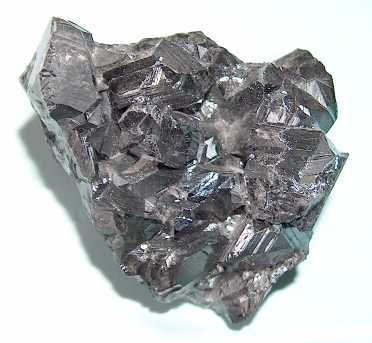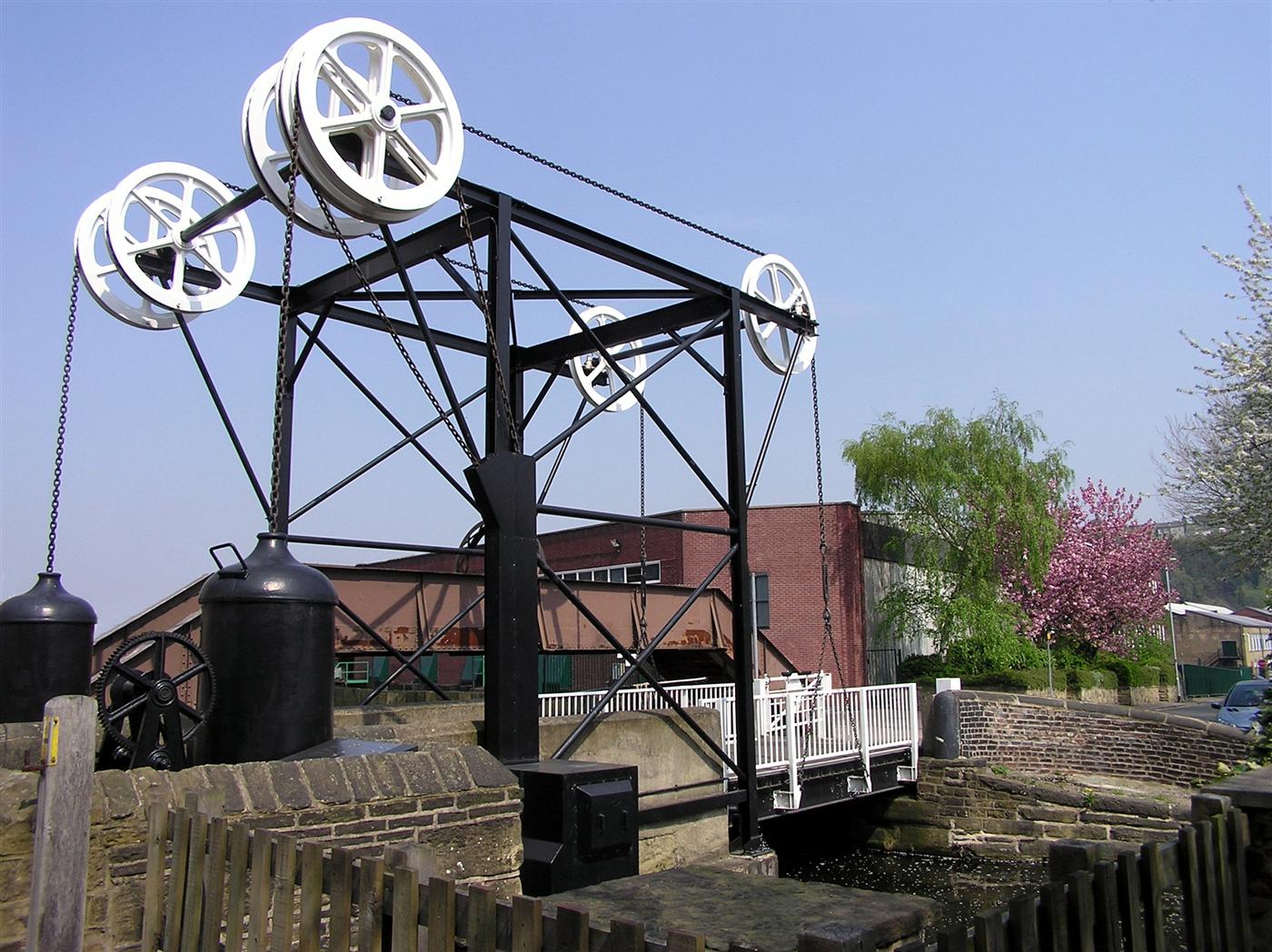|
Ravenswood Mining Landscape And Chinese Settlement Area
Ravenswood Mining Landscape and Chinese Settlement Area is a heritage-listed former mining town and archaeological site on the reserve bounded by School Street, Cemetery Road, Railway Street and Burdekin Falls Dam Road, Ravenswood, Charters Towers Region, Queensland, Australia. It was added to the Queensland Heritage Register on 14 October 2016. History The Ravenswood Mining Landscape and Chinese Settlement Area is situated south of Elphinstone Creek and to the west of School Street and Kerr Street, in the town of Ravenswood, about south of Townsville and east of Charters Towers. The Ravenswood goldfield was the fifth largest producer of gold in Queensland during the late 19th and early 20th centuries. Its main mining periods, prior to modern open cut operations (1987 onwards), were: alluvial gold and shallow reef mining (1868–1872); attempts to extract gold from sulphide ores below the water table (); the New Ravenswood Company era (1899–1917); and small scale mi ... [...More Info...] [...Related Items...] OR: [Wikipedia] [Google] [Baidu] |
Ravenswood, Queensland
Ravenswood is a rural town and locality in the Charters Towers Region, Queensland, Australia. In the , the locality of Ravenswood had a population of 255 people. It is historically and currently a gold mining town. Geography The Flinders Highway loosely bounds parts of the north-western boundary of the locality, entering from the north-east ( Reid River) and exiting to the west ( Broughton). The Great Northern railway line takes a similar route to the highway mostly immediately parallel to the highway to the north or the south, with the following stations: * Cardington railway station, now abandoned () * Woldston railway station() * Fanning railway station, now abandoned () There are a number of neighbourhoods within the locality: * Boori () * Cardington () * Kirk () * Rochford () * Silver Valley () * Waigera () * Woldston () History After the discovery of gold in 1868 through to the early 1900s, the township flourished and grew to nearly 5000 residents and boasted 48 ho ... [...More Info...] [...Related Items...] OR: [Wikipedia] [Google] [Baidu] |
Queensland Government
The Queensland Government is the democratic administrative authority of the Australian state of Queensland. The Government of Queensland, a parliamentary constitutional monarchy was formed in 1859 as prescribed in its Constitution, as amended from time to time. Since the Federation of Australia in 1901, Queensland has been a State of Australia, with the Constitution of Australia regulating the relationships between all state and territory governments and the Australian Government. Under the Australian Constitution, all states and territories (including Queensland) ceded powers relating to certain matters to the federal government. The government is influenced by the Westminster system and Australia's federal system of government. The Governor of Queensland, as the representative of Charles III, King of Australia, holds nominal executive power, although in practice only performs ceremonial duties. In practice executive power lies with the Premier and Cabinet. The Cabinet ... [...More Info...] [...Related Items...] OR: [Wikipedia] [Google] [Baidu] |
Zinc
Zinc is a chemical element with the symbol Zn and atomic number 30. Zinc is a slightly brittle metal at room temperature and has a shiny-greyish appearance when oxidation is removed. It is the first element in group 12 (IIB) of the periodic table. In some respects, zinc is chemically similar to magnesium: both elements exhibit only one normal oxidation state (+2), and the Zn2+ and Mg2+ ions are of similar size.The elements are from different metal groups. See periodic table. Zinc is the 24th most abundant element in Earth's crust and has five stable isotopes. The most common zinc ore is sphalerite (zinc blende), a zinc sulfide mineral. The largest workable lodes are in Australia, Asia, and the United States. Zinc is refined by froth flotation of the ore, roasting, and final extraction using electricity ( electrowinning). Zinc is an essential trace element for humans, animals, plants and for microorganisms and is necessary for prenatal and postnatal development. It ... [...More Info...] [...Related Items...] OR: [Wikipedia] [Google] [Baidu] |
Copper
Copper is a chemical element with the symbol Cu (from la, cuprum) and atomic number 29. It is a soft, malleable, and ductile metal with very high thermal and electrical conductivity. A freshly exposed surface of pure copper has a pinkish-orange color. Copper is used as a conductor of heat and electricity, as a building material, and as a constituent of various metal alloys, such as sterling silver used in jewelry, cupronickel used to make marine hardware and coins, and constantan used in strain gauges and thermocouples for temperature measurement. Copper is one of the few metals that can occur in nature in a directly usable metallic form (native metals). This led to very early human use in several regions, from circa 8000 BC. Thousands of years later, it was the first metal to be smelted from sulfide ores, circa 5000 BC; the first metal to be cast into a shape in a mold, c. 4000 BC; and the first metal to be purposely alloyed with another metal, tin, to create br ... [...More Info...] [...Related Items...] OR: [Wikipedia] [Google] [Baidu] |
Lead
Lead is a chemical element with the Symbol (chemistry), symbol Pb (from the Latin ) and atomic number 82. It is a heavy metals, heavy metal that is density, denser than most common materials. Lead is Mohs scale of mineral hardness#Intermediate hardness, soft and malleable, and also has a relatively low melting point. When freshly cut, lead is a shiny gray with a hint of blue. It tarnishes to a dull gray color when exposed to air. Lead has the highest atomic number of any stable nuclide, stable element and three of its isotopes are endpoints of major nuclear decay chains of heavier elements. Lead is toxic, even in small amounts, especially to children. Lead is a relatively unreactive post-transition metal. Its weak metallic character is illustrated by its amphoteric nature; lead and lead oxides react with acids and base (chemistry), bases, and it tends to form covalent bonds. Compounds of lead are usually found in the +2 oxidation state rather than the +4 state common with lighte ... [...More Info...] [...Related Items...] OR: [Wikipedia] [Google] [Baidu] |
Mundic
''Mundic'' was used from the 1690s to describe a copper ore that began to be smelted at Bristol and elsewhere in southwestern Britain. Smelting was carried out in cupolas, that is reverberatory furnaces using mineral coal. For more details, see copper extraction Copper extraction refers to the methods used to obtain copper from its ores. The conversion of copper consists of a series of physical and electrochemical processes. Methods have evolved and vary with country depending on the ore source, loca .... Mundic once referred to pyrite, but has now adopted the wider meaning of concrete deterioration caused by oxidisation of pyrites within the aggregate (usually originating from mine waste). The action of water and oxygen on pyrite forms sulphate (a salt of sulphuric acid), thereby depleting the pyrite, causing loss of adhesion and physical expansion. Mundic block problem The Cornish word ''mundic'' is now used to describe a cause of deterioration in concrete due ... [...More Info...] [...Related Items...] OR: [Wikipedia] [Google] [Baidu] |
Pyrite
The mineral pyrite (), or iron pyrite, also known as fool's gold, is an iron sulfide with the chemical formula Fe S2 (iron (II) disulfide). Pyrite is the most abundant sulfide mineral. Pyrite's metallic luster and pale brass-yellow hue give it a superficial resemblance to gold, hence the well-known nickname of ''fool's gold''. The color has also led to the nicknames ''brass'', ''brazzle'', and ''Brazil'', primarily used to refer to pyrite found in coal. The name ''pyrite'' is derived from the Greek (), 'stone or mineral which strikes fire', in turn from (), 'fire'. In ancient Roman times, this name was applied to several types of stone that would create sparks when struck against steel; Pliny the Elder described one of them as being brassy, almost certainly a reference to what we now call pyrite. By Georgius Agricola's time, , the term had become a generic term for all of the sulfide minerals. Pyrite is usually found associated with other sulfides or oxides in quartz ... [...More Info...] [...Related Items...] OR: [Wikipedia] [Google] [Baidu] |
Black Jack, Queensland
Black Jack is a rural locality in the Charters Towers Region, Queensland, Australia. In the Black Jack had a population of 161 people. It was formerly a mining town which is now abandoned. Geography Black Jack is a triangular-shaped locality. The Great Northern railway line forms the northern boundary of Black Jack. There are two railway stations within the locality, Wellington Yards railway station in the far north-east corner (on the outskirts of the suburban area of Charters Towers) and Southern Cross railway station Southern Cross railway station (until 2005 known as Spencer Street station) is a major railway station in Docklands, Melbourne. It is on Spencer Street, between Collins and La Trobe Streets, at the western edge of the Melbourne central busin ... on its north-west border. The Flinders Highway passes through the northern part of the locality, while the Diamantina Road forms its eastern boundary. Black Jack is approximately 350 metres above sea level r ... [...More Info...] [...Related Items...] OR: [Wikipedia] [Google] [Baidu] |
Power Plant At The Ravenswood Deep Mines Ltd
Power most often refers to: * Power (physics), meaning "rate of doing work" ** Engine power, the power put out by an engine ** Electric power * Power (social and political), the ability to influence people or events ** Abusive power Power may also refer to: Mathematics, science and technology Computing * IBM POWER (software), an IBM operating system enhancement package * IBM POWER architecture, a RISC instruction set architecture * Power ISA, a RISC instruction set architecture derived from PowerPC * IBM Power microprocessors, made by IBM, which implement those RISC architectures * Power.org, a predecessor to the OpenPOWER Foundation * SGI POWER Challenge, a line of SGI supercomputers Mathematics * Exponentiation, "''x'' to the power of ''y''" * Power function * Power of a point * Statistical power Physics * Magnification, the factor by which an optical system enlarges an image * Optical power, the degree to which a lens converges or diverges light Social sciences and p ... [...More Info...] [...Related Items...] OR: [Wikipedia] [Google] [Baidu] |
Whim (mining)
A whim, also called a whim gin or a horse capstan, is a device similar to a windlass which is used in mining for hauling materials to the surface. It comprises a capstan or a wide drum with a vertical axle. A rope is wound around the drum, with both ends traversing several pulleys and hanging down the mine shaft. As the drum is turned around, one end of the rope is lowered, carrying an empty bucket, while the other one is raised, carrying a full load. The major benefit of a whim is that its operation can be performed at a distance from the shaft, thus resolving some of the congestion. Early whims were horse-powered, but later they were powered by waterwheels or steam engines, including the most advanced Cornish engines. Whims were used in coal mines until the end of the nineteenth century. Horse whims were also used to power team boats. The gin wheel at Nottingham Industrial Museum dating from 1844, is a wooden drum, set on a vertical pole within a wooden frame, with a horizont ... [...More Info...] [...Related Items...] OR: [Wikipedia] [Google] [Baidu] |
Windlass
The windlass is an apparatus for moving heavy weights. Typically, a windlass consists of a horizontal cylinder (barrel), which is rotated by the turn of a crank or belt. A winch is affixed to one or both ends, and a cable or rope is wound around the winch, pulling a weight attached to the opposite end. The Greek scientist Archimedes was the inventor of the windlass. The oldest depiction of a windlass for raising water can be found in the Book of Agriculture published in 1313 by the Chinese official Wang Zhen of the Yuan Dynasty ( 1290–1333). Uses * Vitruvius, a military engineer writing about 28 BC, defined a machine as "a combination of timber fastened together, chiefly efficacious in moving great weights." About a century later, Hero of Alexandria summarized the practice of his day by naming the "five simple machines" for "moving a given weight by a given force" as the lever, windlass, screw for power, wedge, and tackle block (pulley). Until nearly the end of the n ... [...More Info...] [...Related Items...] OR: [Wikipedia] [Google] [Baidu] |
Cape River (Queensland)
The Burdekin River is a river located in North and Far North Queensland, Australia. The river rises on the northern slopes of Boulder Mountain at Valley of Lagoons, part of the western slope of the Seaview Range, and flows into the Coral Sea at Upstart Bay over to the southeast of the source, with a catchment area of approximately . The Burdekin River is Australia's largest river by (peak) discharge volume. The river was first encountered by Europeans during the expedition led by Ludwig Leichhardt in 1845 and named in honour of Thomas Burdekin, one of the sponsors of the expedition. Course and features The Burdekin River rises on the western slopes of the Seaview Range, part of the Great Dividing Range, west of . In the river's upper catchment, from its source the river generally flows west and then south out of the Girringun National Park, part of the UNESCO Wet Tropics World Heritage Area. This area, now part of Basalt was the location of one of the earliest inland settle ... [...More Info...] [...Related Items...] OR: [Wikipedia] [Google] [Baidu] |




.jpg)

